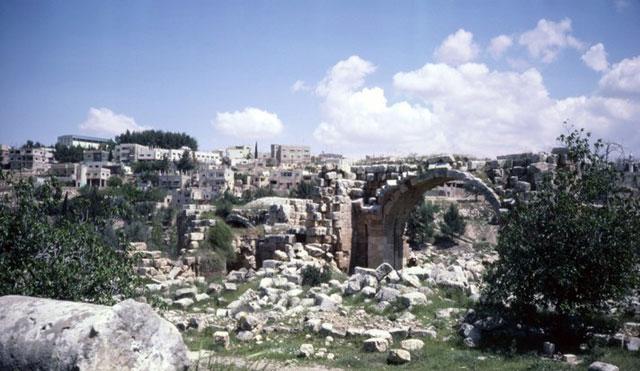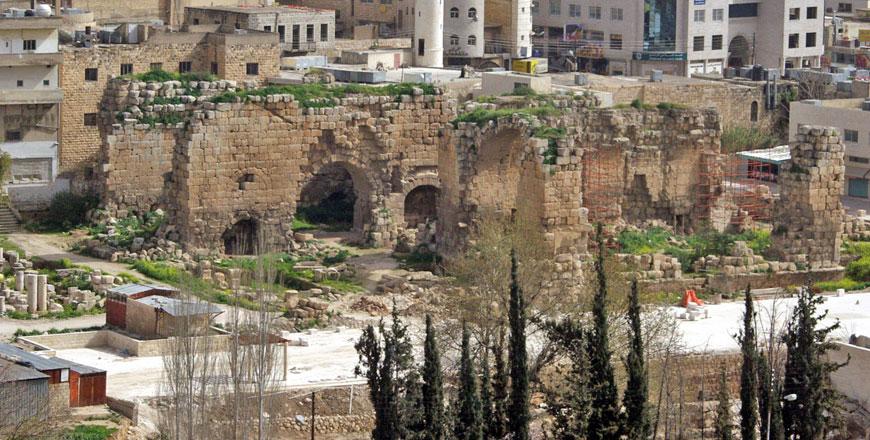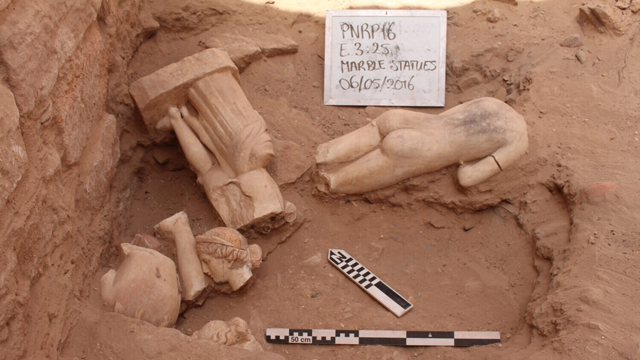You are here
Jerash sculptures point towards early Arab, Greco-Roman contact — German scholar
By Saeb Rawashdeh - Oct 19,2019 - Last updated at Oct 19,2019

The Great Eastern Roman Baths attracted research teams from around the world and in the late antiquity served as a dumpster for many of Hellenistic and Roman sculptures (Photo courtesy of ACOR, Paul and Nancy Lapp Collection)
AMMAN — Peaceful relations between the Arab world and Europe go back to the period of antiquities, according to a German professor.
Speaking during a lecture titled “Gerasa, the Eastern Roman Baths” held at the German Protestant Institute of Archaeology in Amman on Wednesday, Thomas Weber-Karyotakis said that his work mainly centres on Greco-Roman sites.
Reflecting on the question of how relations emerged between the Greco-Roman world and south Arabia, the professor said that the key connection was the Roman province known as Arabia (established in 106 AD), which was a former Nabataen kingdom that had commercial and cultural ties with Arabian kingdoms due to incense trade.
He added that marble was not naturally available in the Middle East, so it had to be brought from, Turkey, Greece, Italy and northern Africa through three main land corridors: Orontes Valley, the Plain of Homs and Jezreel Valley.
Sculpture analysis, Weber-Karyotakis said, gives additional information to researchers about “deep relations between Arabia and the Greco-Roman world”.
In 1985, Weber-Karyotakis arrived to Jerash to work on the Eastern Roman Baths, and during seasons 1986/1987, the team excavated part of the bath, which was a pillared hall, containing many findings.
“In the hall they uncovered a number of fragments of statues and inscribed statue bases,” the scholar said, noting the “immense” challenge of finding remains of statues and connecting them with the bases.
The archaeological team resumed excavations at the remaining sections of the Eastern Roman Baths that were “entirely obscured”, and under the second layer of rubble they found marble pieces that belonged to statues, but “all of them were missing the head and arms”, Weber-Karyotakis highlighted, noting that this suggested that these statues were broken by humans, not the earthquake of 749 AD.
“In the hall, other sculptures of Roman officials were found wearing togas [ancient Roman robe] that were only reserved for the Roman citizens,” the professor said.
The baths themselves were connected by a system of channels and pools containing thermal water, he said.
The statues of goddesses were taller than statues of male deities, and Weber-Karyotakis said that a statue of Aphrodite, which was 208 cm tall, was “clearly” donated by the local priest Dimitrios.
The Aphrodite probably served as a cultic statue, as the team discovered near the sculpture a hearth where animals were likely slaughtered and meat would be roasted and served to the community, he said.
A sculpture of Dionysus (a god of fertility and cultivation) discovered at the site will be assembled in the future, Weber-Karyotakis said, adding that a statue of Magna Mater or Cybele (a mother goddess) seated on a throne will also be restored and displayed to the public.
Related Articles
AMMAN — Marble statues found in 2017 probably decorated the Great Eastern Baths in Jerash, said a German scholar.The statues were found in 2
JERASH — After years of meticulous work, a French archaeological team that has been excavating the eastern Roman baths in Jerash, unearthed
AMMAN — Two marble sculptures of Aphrodite were found in the building in Petra one metre above the floor level, said Professor Megan Perry f



















